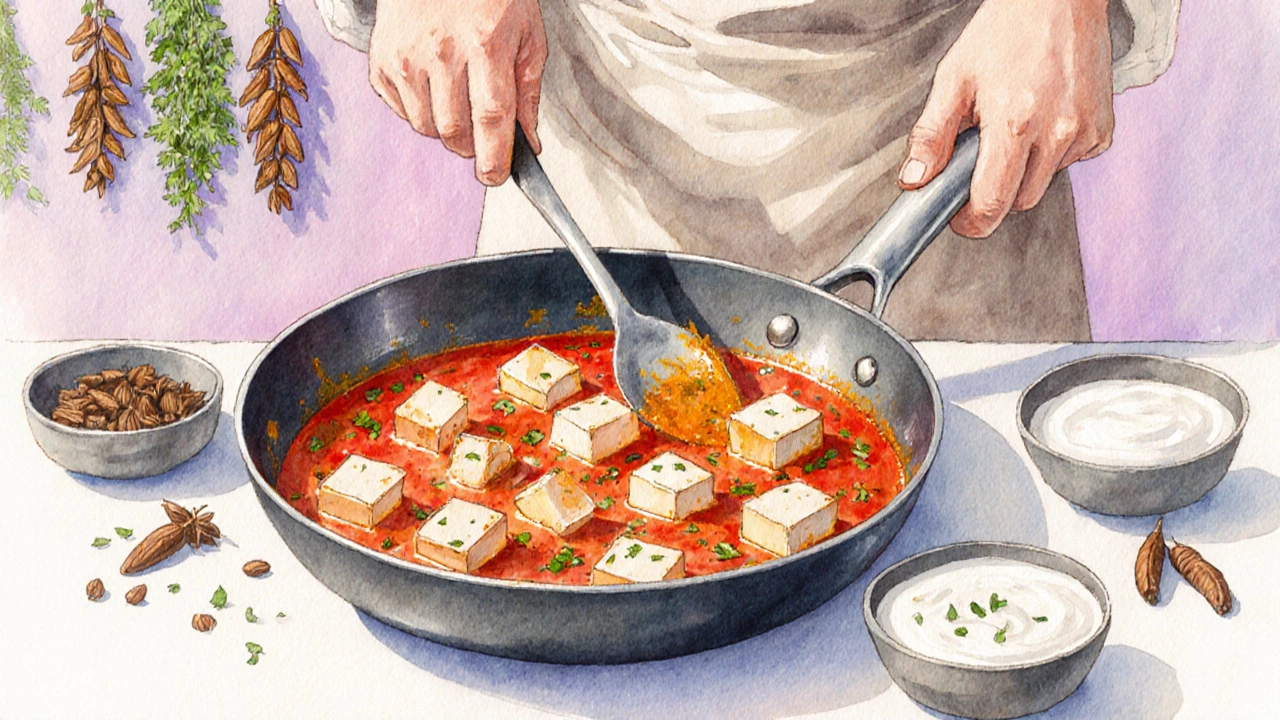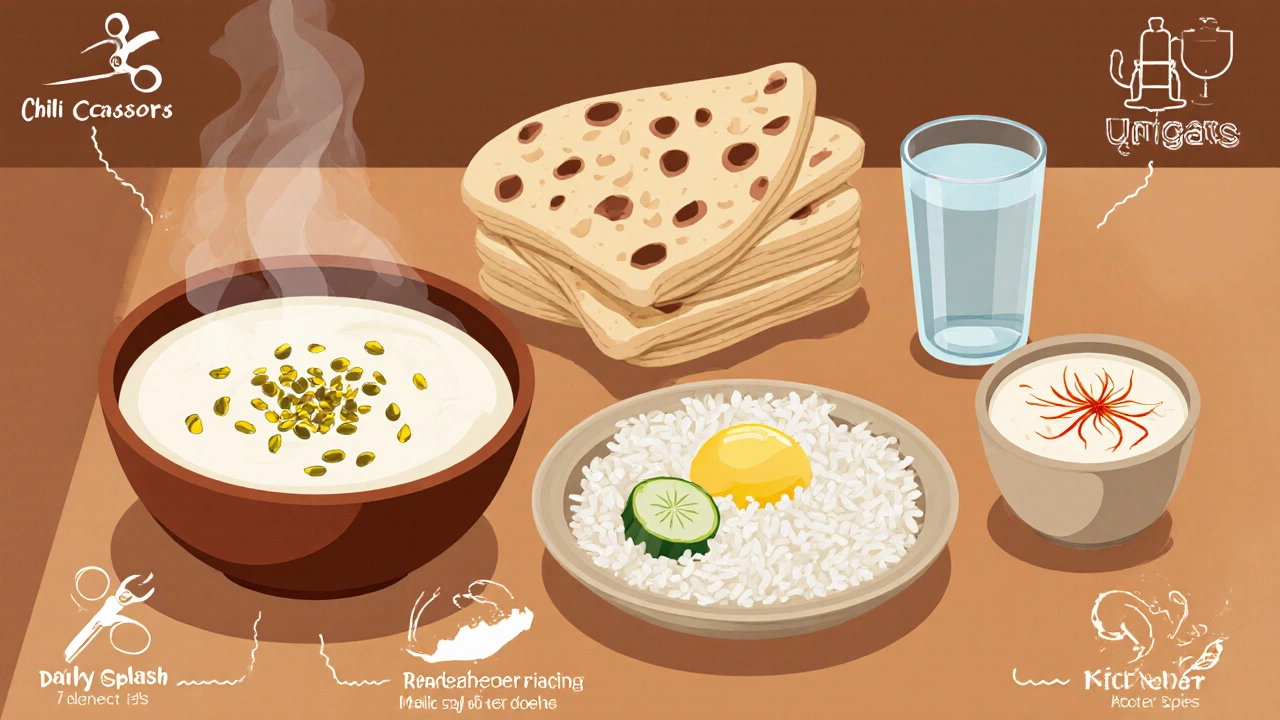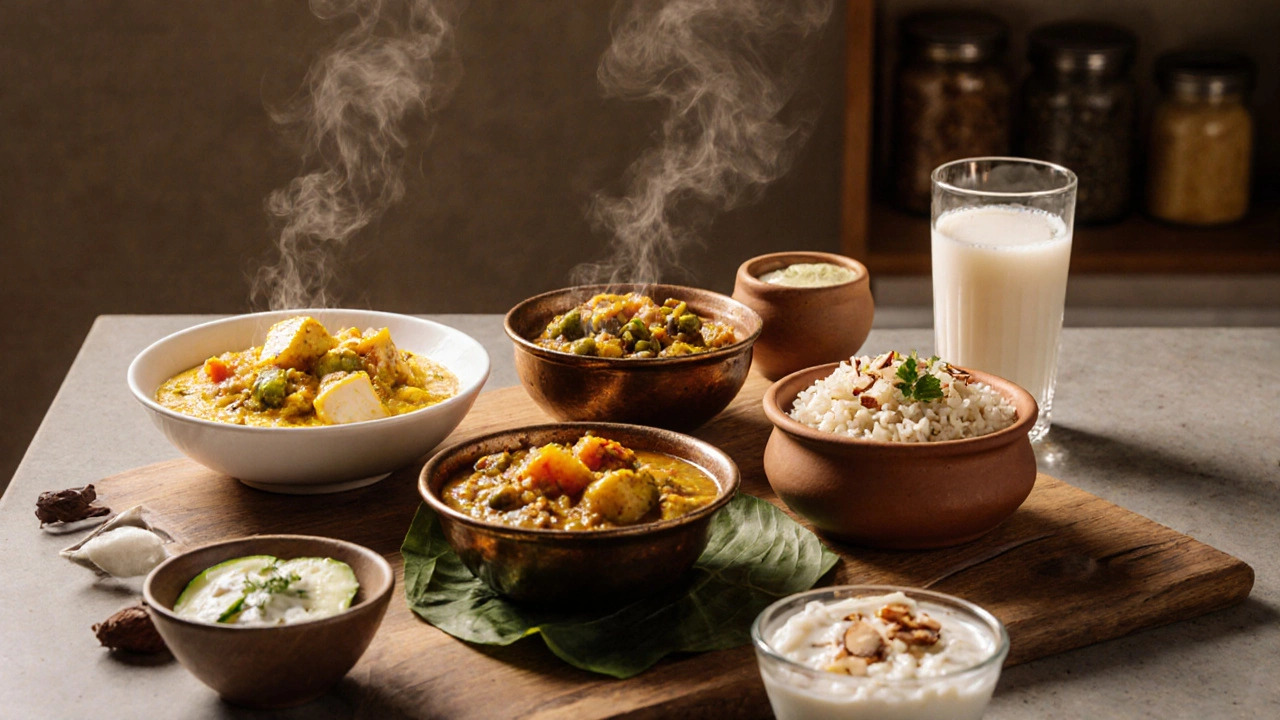Spice Level Calculator for Indian Dishes
Spice Level Analysis
Personalized Tips
Select a dish and adjust spice level to see personalized tips.
Pro Tip: When ordering at restaurants, ask for "no extra chilies" or "mild" preparation.
When you wonder about the least spicy Indian dish, you’re looking for flavor without the heat. Maybe your palate is new to Indian food, or a family member can’t handle chilies. The good news is Indian cuisine isn’t all fire‑driven; there are plenty of gentle options that let you enjoy the aromatic herbs, creamy sauces, and comforting textures without sweating. Below you’ll find the dishes that reliably stay on the mild side, tricks to tone down any recipe, and how to order smart at a restaurant.
Key Takeaways
- Indian cuisine offers several dishes that routinely score 2 or lower on a 10‑point spice scale.
- Vegetarian options like Paneer Butter Masala and Vegetable Korma are naturally mild.
- You can dial down heat by reducing chilies, using yogurt or coconut milk, and swapping whole spices for milder aromatics.
- When eating out, ask for “less chili” or request the dish be prepared “mild” - most Indian restaurants are happy to accommodate.
- Keep a quick checklist handy to plan a low‑spice Indian meal from starter to dessert.
Understanding Spice Levels in Indian Cooking
Spice in Indian food isn’t just about heat; it’s about flavor depth. A dish may use chilies for a sharp kick, but the base often comes from toasted seeds (cumin, coriander, fennel), fresh herbs (cilantro, mint), and aromatics (ginger, garlic). When we talk about “least spicy,” we’re focusing on two things:
- Capsaicin content - the compound that makes chilies hot.
- Overall flavor profile - how dominant the chili taste is compared to sweet, tangy, or creamy notes.
Restaurants and home cooks usually rate dishes on a scale of 1 (no heat) to 10 (blazing). The dishes listed below consistently land between 1 and 3, even in traditional regional preparations.
Top 7 Least Spicy Indian Dishes
Below are the most reliable mild options, with a short description of why they stay gentle and a quick tip to keep them that way.
Paneer Butter Masala
Soft cubes of paneer (Indian cottage cheese) swim in a silky tomato‑cream sauce. The sauce gets its richness from butter, cream, and a hint of cashew paste, while the chilies are kept to a whisper. Tip: Ask for “no extra green chilies” and the chef will still give you that buttery, sweet flavor.
Vegetable Korma
A medley of mixed veggies simmered in a sauce made from coconut milk, ground almonds, and subtle spices like cardamom and cinnamon. No chilies are required for authenticity, making it a safe bet for a mild palate.
Dal Tadka (Mild Version)
Yellow lentils cooked until soft, then finished with a tempering (tadka) of cumin, mustard seeds, and a tiny pinch of turmeric. Skip the red chili powder, and you get a comforting, earthy dish with a delicate aroma.
Curd Rice (South Indian Style)
Steamed rice mixed with plain yogurt, a dash of salt, and a mild tempering of mustard seeds and curry leaves. It’s cool, soothing, and often served as a palate‑cleanser.
Aloo Gobi
This cauliflower‑potato stir‑fry relies on turmeric, cumin, and a pinch of garam masala for flavor. If the recipe calls for green chilies, simply omit them - the dish stays aromatic, not fiery.
Matar Paneer
Paneer cubes and green peas cooked in a lightly spiced tomato‑onion gravy. The gravy is often kept mild, with just a whisper of Kashmiri red chili (which adds color, not heat).
Rice Kheer
A sweet rice pudding flavored with cardamom, saffron, and toasted nuts. No chilies, pure comfort.

How to Reduce Spice in Any Indian Recipe
Even if you fall in love with a hotter dish, you can always tame it. Here are five proven methods:
- Cut the chilies: Remove fresh chilies, discard the seeds, or omit powdered chilies entirely.
- Dilute with dairy: Yogurt, cream, or coconut milk neutralize capsaicin. Stir in a spoonful at the end of cooking.
- Increase sweet elements: A dash of sugar or honey balances heat without overwhelming flavors.
- Boost aromatics: More ginger, garlic, or fresh herbs can mask the lingering heat.
- Serve with cooling sides: Raita (yogurt‑cucumber sauce), plain naan, or a simple salad help soothe the palate.
Tips for Choosing Mild Indian Food When Dining Out
Restaurant menus can be cryptic. Look for cues like “no.2” (mild) or “kasuri methi” (dried fenugreek) which usually means the dish isn’t heavy on chilies. When unsure, ask the server:
- “Can this be made milder?” - most chefs will gladly reduce or omit chilies.
- “Do you have a yogurt‑based sauce?” - dishes like “dahi chicken” or “naan with butter” are safe.
- “What’s the spice level on a scale of 1‑5?” - gives you a quick gauge.
And always pair a spicy entree with a plain side (plain rice, roti, or cucumber raita) to keep the overall meal gentle.

Quick Checklist for a Mild Indian Meal
- Starter: Cucumber Raita or Plain Papad (no chili coating).
- Main: Choose from the top 7 dishes listed above.
- Side: Steamed Basmati Rice or Butter Naan - both neutral carriers.
- Drink: Sweet Lassi or plain water with a squeeze of lemon.
- Dessert: Rice Kheer or Gulab Jamun (sweet, no spice).
| Dish | Main Ingredients | Typical Spice Score (0‑10) | Region | Vegetarian? |
|---|---|---|---|---|
| Paneer Butter Masala | Paneer, tomato, cream, butter | 2 | North India | Yes |
| Vegetable Korma | Mixed veg, coconut milk, almonds | 1 | South India | Yes |
| Dal Tadka (Mild) | Yellow lentils, cumin, mustard seeds | 2 | All India | Yes |
| Curd Rice | Rice, yogurt, mustard seeds | 1 | South India | Yes |
| Aloo Gobi | Potato, cauliflower, turmeric | 2 | North India | Yes |
| Matar Paneer | Paneer, peas, tomato gravy | 2 | North India | Yes |
| Rice Kheer | Rice, milk, sugar, cardamom | 0 | All India | Yes |
If you keep these dishes and tricks in mind, you’ll never feel forced into a fiery meal again. Indian cuisine can be comforting, aromatic, and totally approachable - even for the most spice‑sensitive palate.
Frequently Asked Questions
Which Indian dish has zero heat?
Rice Kheer (sweet rice pudding) contains no chilies at all. It’s a dessert, but if you need a completely bland option for a main course, plain curd rice or a simple butter naan also have a spice score of zero.
Can I make a classic spicy dish milder at home?
Absolutely. Reduce the amount of green chilies or red chili powder by at least half, and add a tablespoon of yogurt or cream to the sauce. A splash of coconut milk works well for South Indian curries.
What side dishes help tone down heat?
Raita (yogurt with cucumber or mint), plain basmati rice, soft naan, or even a simple salad with lemon dressing all provide cooling contrast to any residual spice.
Are there regional Indian cuisines that are naturally milder?
South Indian coastal cuisine often relies on coconut milk and mustard seeds, which keep heat low. Similarly, many Punjabi dishes use cream or butter to balance spices, resulting in milder profiles.
How do I ask for a mild dish at an Indian restaurant?
Simply tell the server, “Could you please make this less spicy?” or “Can I have it with no extra green chilies?” Most chefs will note “mild” on the kitchen ticket.
